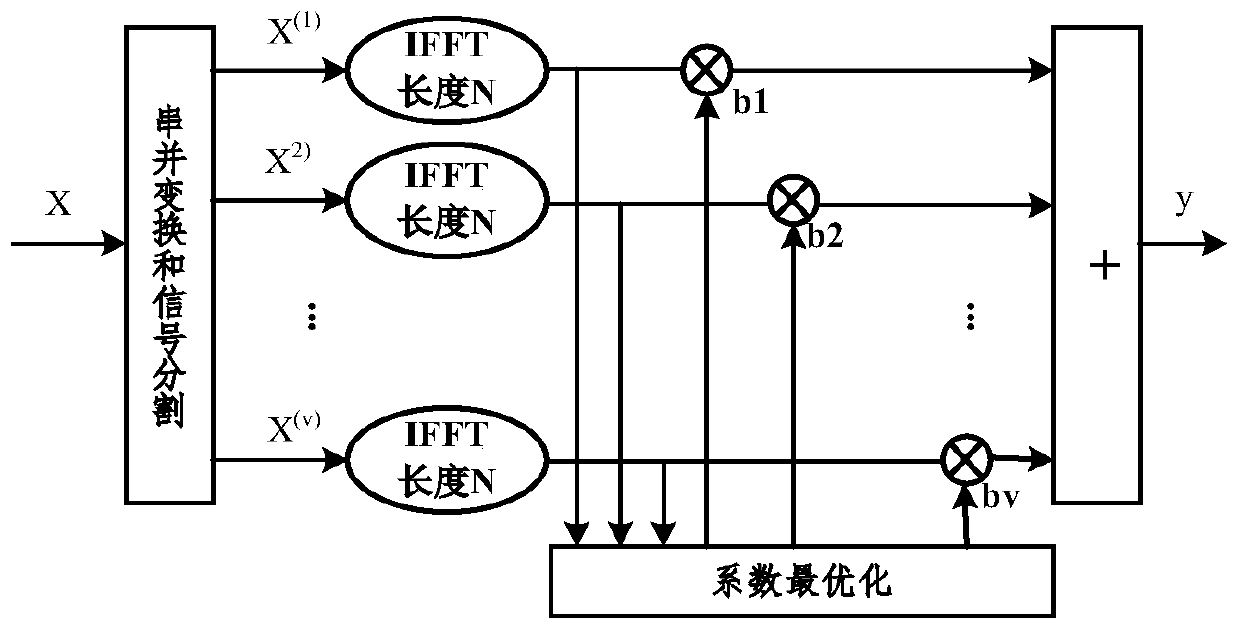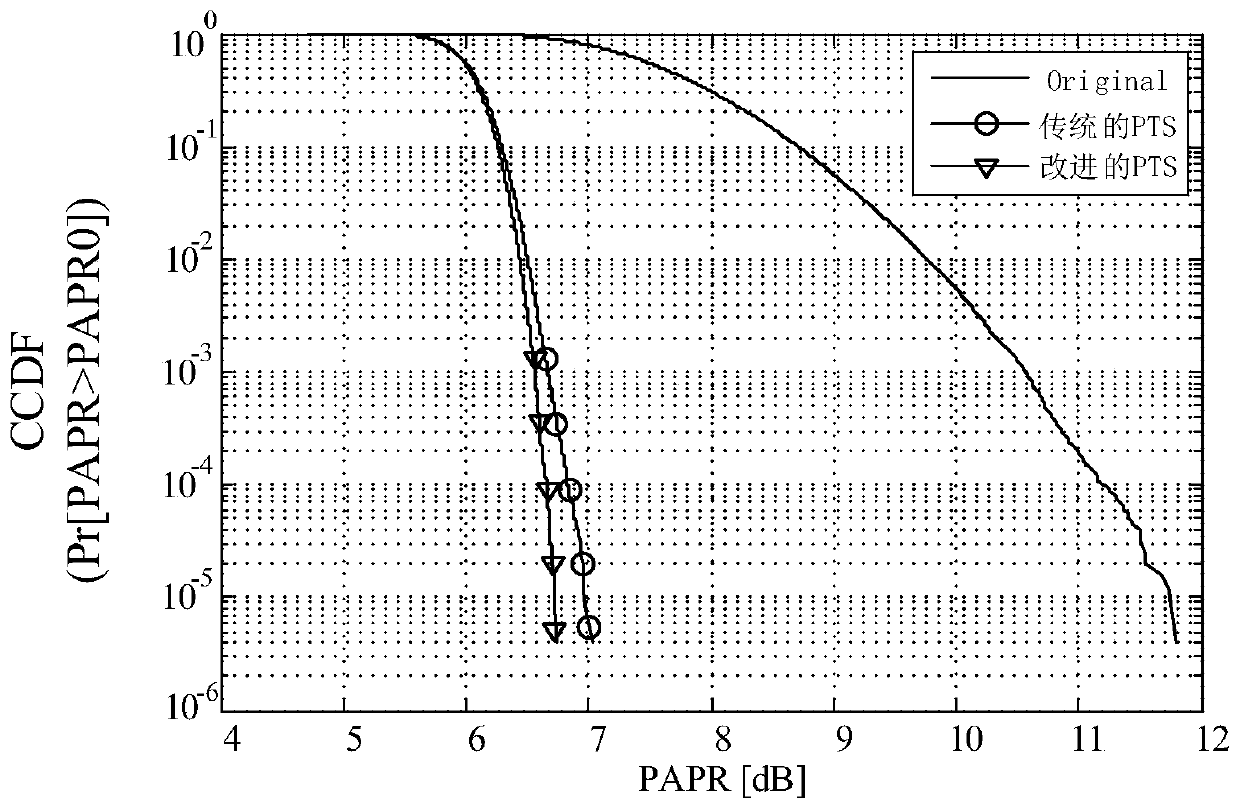A Partial Transmission Sequence Grouping Method for Index Modulation
A technology of index modulation and partial transmission, which is applied in transmission systems, digital transmission systems, and error prevention. It can solve problems such as differences and no valid data, and achieve the effects of reducing correlation, improving performance, and improving system performance.
- Summary
- Abstract
- Description
- Claims
- Application Information
AI Technical Summary
Problems solved by technology
Method used
Image
Examples
Embodiment 1
[0035] In this example, the number of subcarriers is 256, the modulation method is QPSK modulation, the index modulation method is 8 subcarriers as a submodule, each submodule has one valid data, the PTS grouping is 8 groups, and the phase factor is ±1. This example takes the following steps:
[0036] Step 1: Calculate the required number of bits according to the modulation method and the subcarrier index modulation method, and then generate symbols through two kinds of modulation;
[0037] Step 2: Perform two operations on the generated data symbols, one is to directly process the data symbols through the interleaving method, and the other is to record the interleaving index of each symbol while processing through the interleaving method.
[0038] Step 3: Perform two operations on the interleaved data, one is to directly perform PTS grouping (here divided into 8 groups), and the other is to use the recorded interleaving index to extract from several data belonging to the same...
Embodiment 2
[0043] In this example, the number of sub-carriers is 256, the modulation method is QPSK modulation, the index modulation method is 16 sub-carriers as a sub-module, each sub-module has one valid data, the PTS grouping is 8 groups, and the phase factor is ±1. , this example takes the following steps:
[0044] Step 1: Calculate the required number of bits according to the modulation method and the subcarrier index modulation method, and then generate symbols through two kinds of modulation;
[0045] Step 2: Perform two operations on the generated data symbols, one is to directly process the data symbols through an interleaving method, and the other is to record the interleaving index of each symbol while processing through the interleaving method;
[0046] Step 3: Perform two operations on the interleaved data, one is to directly perform PTS grouping (here divided into 8 groups), and the other is to use the recorded interleaving index to extract from several data belonging to th...
Embodiment 3
[0051] In this example, the number of sub-carriers is 256, the modulation method is QPSK modulation, the index modulation method is 16 sub-carriers as a sub-module, each sub-module has one valid data, the PTS is grouped into 4 groups, and the phase factor is ±1. , this example takes the following steps:
[0052] Step 1: Calculate the required number of bits according to the modulation method and the subcarrier index modulation method, and then generate symbols through two kinds of modulation;
[0053] Step 2: Perform two operations on the generated data symbols, one is to directly process the data symbols through the interleaving method, and the other is to record the interleaving index of each symbol while processing through the interleaving method. ;
[0054] Step 3: Perform two operations on the interleaved data, one is to directly perform PTS grouping (here divided into 4 groups), and the other is to use the recorded interleaving index to extract from several data belongi...
PUM
 Login to View More
Login to View More Abstract
Description
Claims
Application Information
 Login to View More
Login to View More - R&D
- Intellectual Property
- Life Sciences
- Materials
- Tech Scout
- Unparalleled Data Quality
- Higher Quality Content
- 60% Fewer Hallucinations
Browse by: Latest US Patents, China's latest patents, Technical Efficacy Thesaurus, Application Domain, Technology Topic, Popular Technical Reports.
© 2025 PatSnap. All rights reserved.Legal|Privacy policy|Modern Slavery Act Transparency Statement|Sitemap|About US| Contact US: help@patsnap.com



